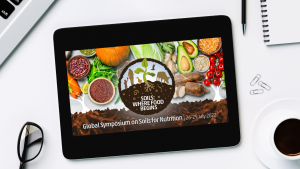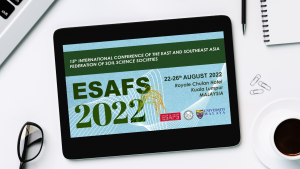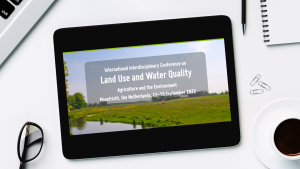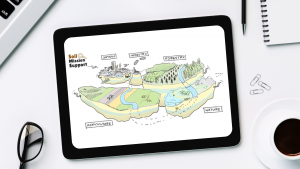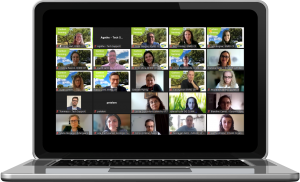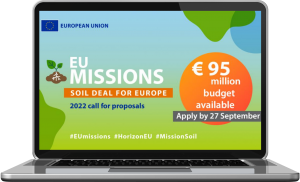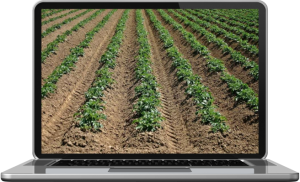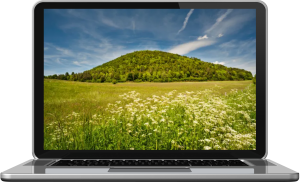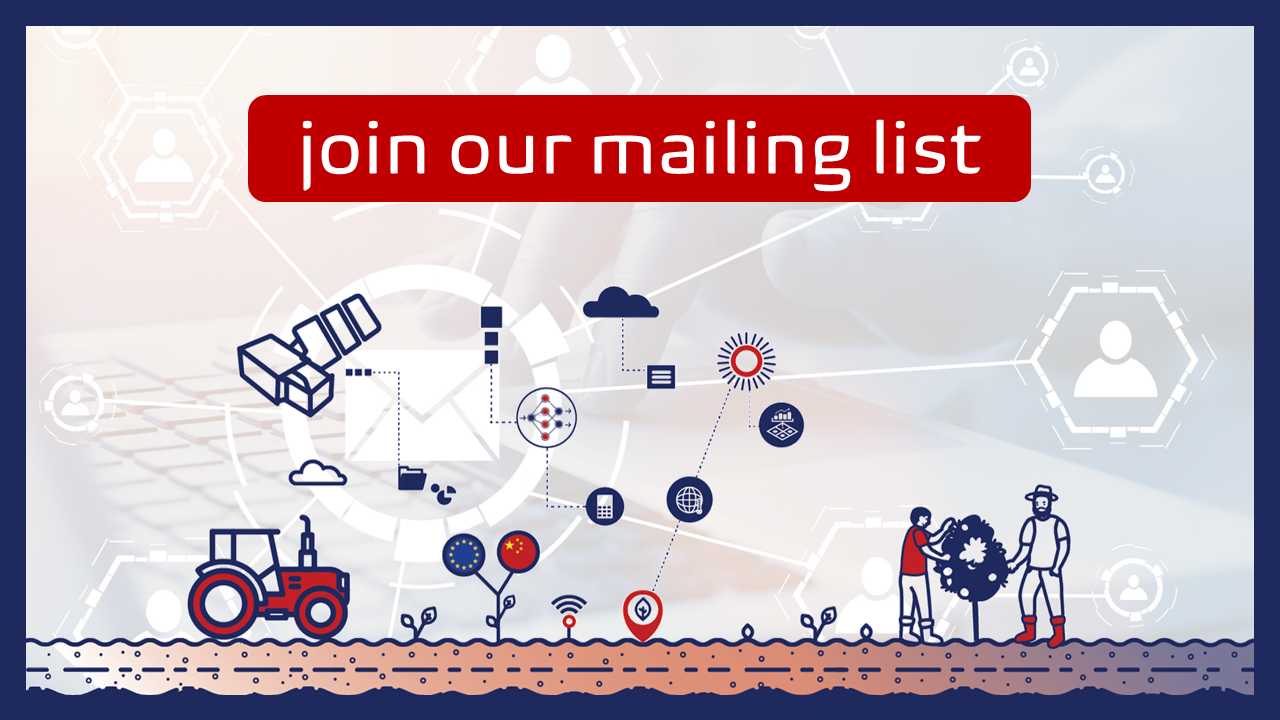PROJECT RESULTS AND ACHIEVEMENTS
The SIEUSOIL project is after a three-year journey coming to its end. Its aim and objectives are being successfully reached and capitalised on. The project’s partners are utterly delighted to share their achievements in the following where you can read about the project‘s status, results and next few steps remaining per Work Package.

WP1 Eurasian Soil Platform: The aim of WP1 was to establish a harmonised Eurasian soil and land geo-database highlighting soil and land quality indicators in a common China-EU Web Observatory platform. SIEUSOIL has managed in close cooperation with the Food and Agriculture Organization (FAO) of the United Nations to lay down the cornerstone for the Global Soil Information System (GloSIS). The SIEUSOIL/GloSIS ontology is available upon request under an open licence and it includes 11 modules for 340 soil properties. The semantic models of GloSIS and Open Land Use, will continue being enhanced relative to refactoring of the physiochemical properties code list, the creation of soil sampling procedures code list and tools for easy extension of soil properties and the implementation of a new versioning approach. SIEUSOIL also closely collaborates with the DG Joint Research Centre (JRC) of the European Commission on evaluating the accuracy of soil related datasets of self evidence of data providers and a paper on Land Use Policy relative to these findings is soon to be published.
WP2 Soil Management Methods: This WP looked into a compilation of the most promising soil management methods (using both conventional and emerging technologies, as well as from field to landscape scale) to study the individual and combined effects on soil health and productivity. WP2 is working towards providing final recommendations for soil management for improving soil quality and function, an analysis on the impact of Land Use on Soil Quality and the assimilation of biophysical quality indicators into fusion products.
WP3 Limiting factors to optimal quality and productivity: The WP3 seeks to develop an evaluation framework for assessing current soil and land quality and to determine current limiting factors to optimal quality and productivity. So far, the spatial variability in yield has been characterized based on statistics at different scales and remote sensing-based indicators and the soil. Additionally, land and water characteristics that reflect efficient management of soil quality and land resources as well as limitations for optimal production with limited inputs have been established. These results are currently being assessed to calculate the yield potential from field and farm to regional and country scale, and its relation to soil quality and land and water resources management; whilst a web-based viewer for multiple actors is being developed to explore and derive information at the field scale.
WP4 Precision Agriculture: The main objective of WP4 is to implement precision agriculture technologies and approaches to increase soil productivity at reduced input and environmental footprints. Having successfully completed geostatistical analyses for mapping the spatial distribution of named soil and crop properties, as well as the delineation of management zone maps, variable rate fertilisation experiments were conducted in the 2021 cropping season. Simulation work on site specific tillage took place, followed by site specific tillage experiments in the 2022 cropping season that are still running. Regarding SIEUSOIL’s Controlled Traffic Farming solution it has been concluded it provides significant advancements, when it comes to efficient plot divisions in 3D, the optimisation of entry and exit points of both plot and plot segment, the employment of more machines in parallel and obstacles in a farm machinery trajectory.
WP5 Spatial Land Suitability Analysis Tool: The scope of WP5 is to develop a methodology for Land Suitability Analysis based on several indicators describing the current and future pedoclimatic conditions of the area, along with other factors expressing soil health, crop growth and the socioeconomic status of the region. Results have up to now showed that the method is capable of producing Land Suitability Analysis (LSA) maps that comply with local conditions in each area and evaluating SICS scenarios by projecting soil characteristics and LSA 100 years in the future. The procedure of LS Analysis employed managed to produce pilot areas maps that are user friendly as they are provide spatial information of suitability performance per crop both as a percentage value, and as suitability class according to FAO. In addition, the produced limiting factor maps facilitates planning of management practices to ameliorate the limiting characteristics. Another advantage is the dynamic character of the procedure that enables its application to other geographical locations by considering local crops, data, and expertise.
WP6 ICT Open Platform Integration: Following the development of the prototype DSS test version in the frames of WP6 ICT Open Platform Integration the user’s training and adoption of the Decision Support System (DSS) has been completed. After pilot testing and co-creation activities, the DSS has undergone improvements in its functionalities based on the user’s experience feedback. Partners are currently working on the Platform’s fine-tuning and the release of the final version of the DSS in English and Chinese.
WP7 Pilots-integration: This WP aims at establishing the SIEUSOIL Pilots and evaluating the developed methods across different Eurasian environments. A validation framework and set-up of a multi-actor community in each Pilot were established early in the project as well as relative co-creation and co-implementation activities of local prototype packages adjusted to the needs of each Pilot. Partners are currently working on the joint evaluation and validation with a multi-stakeholder community towards achieving optimal results and the synthesis of SIEUSOIL products for end users.
WP8 Enabling environment and economic impact: WP8 works in the direction of the analysis of the impacts of the proposed scenarios for managing soils towards sustainable intensification in terms of agro-ecosystem services delivery, socio-economic benefits, and adoption by policy makers. Having identified the main socio-economic impacts and completed the policy analysis partners are currently working on the evaluation of the life cycle environmental performance of the SIEUSOIL practice, compared to current and conventional farming practices. At the same time a socio-economic analysis and impact report is being elaborated along with the SIEUSOIL Policy recommendations that will be derived from the project results.
Finally, the activities of WP9 on Dissemination, communication and exploitation are continuing strongly acting on a local, regional, national, European, and global level.
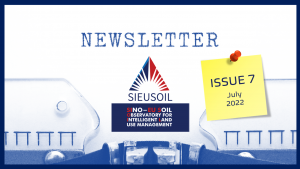 Check out SIEUSOIL’s progress and our latest publications and deliverables in “Project News”.
Check out SIEUSOIL’s progress and our latest publications and deliverables in “Project News”.

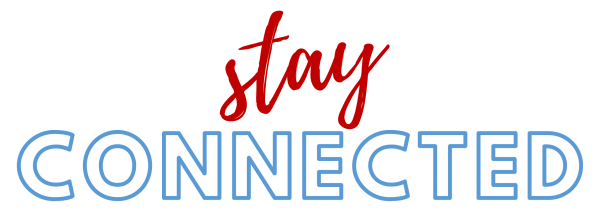
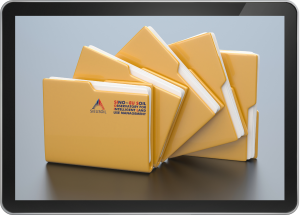
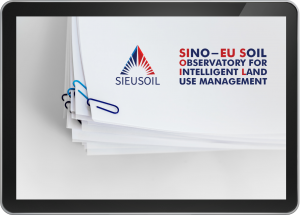 NEW PUBLICATIONS
NEW PUBLICATIONS

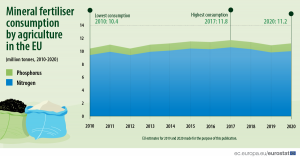

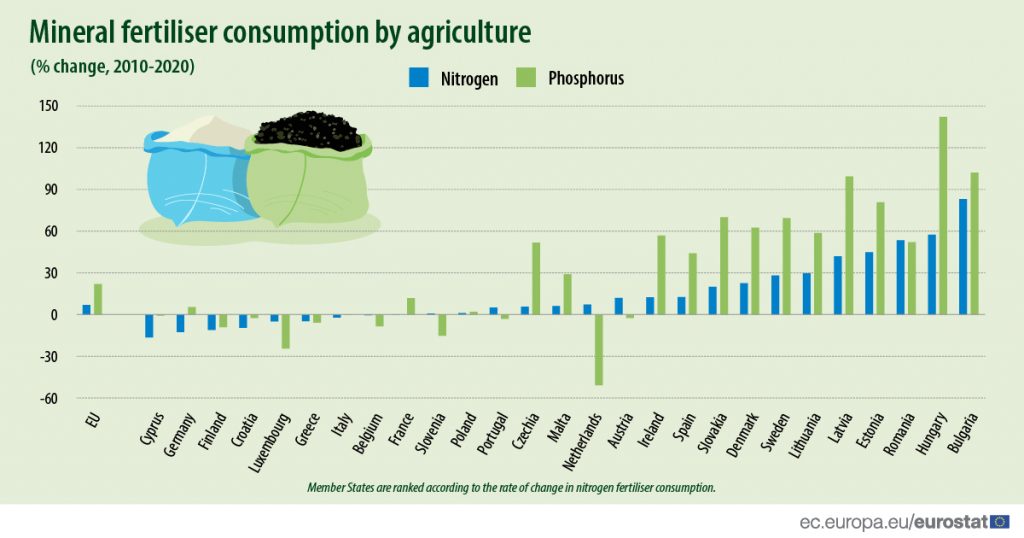
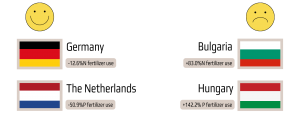
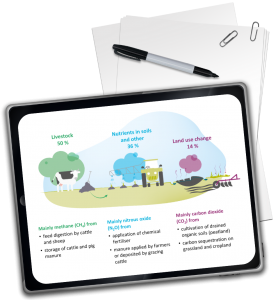 The reduction of the climate footprint of global agriculture is crucial for the fight against climate change. Agriculture contributes to 20-25% of the total global (53.6 billion t CO2 equivalents) Green-House Gas emissions and about 10% of total EU GHG emissions. Forty-five per cent (45%) of agricultural emissions are produced by land use changes and as such, it is crucial to minimize the conversion of untouched land into farmland. Increased food production needs due to the growing population must be satisfied by sustainable intensification, producing more on less land with fewer resources. In addition, mineral fertilizer production accounts for around 5% of the agriculture sector’s emissions that according to Eurostat’s latest estimations consumption of mineral fertilisers is increasing (see Fact & Figures for more).
The reduction of the climate footprint of global agriculture is crucial for the fight against climate change. Agriculture contributes to 20-25% of the total global (53.6 billion t CO2 equivalents) Green-House Gas emissions and about 10% of total EU GHG emissions. Forty-five per cent (45%) of agricultural emissions are produced by land use changes and as such, it is crucial to minimize the conversion of untouched land into farmland. Increased food production needs due to the growing population must be satisfied by sustainable intensification, producing more on less land with fewer resources. In addition, mineral fertilizer production accounts for around 5% of the agriculture sector’s emissions that according to Eurostat’s latest estimations consumption of mineral fertilisers is increasing (see Fact & Figures for more).
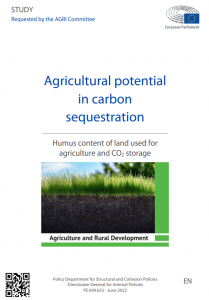 Agricultural potential in carbon sequestration
Agricultural potential in carbon sequestration